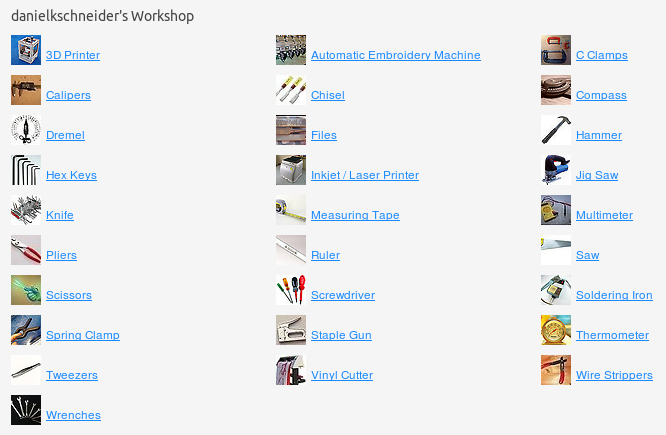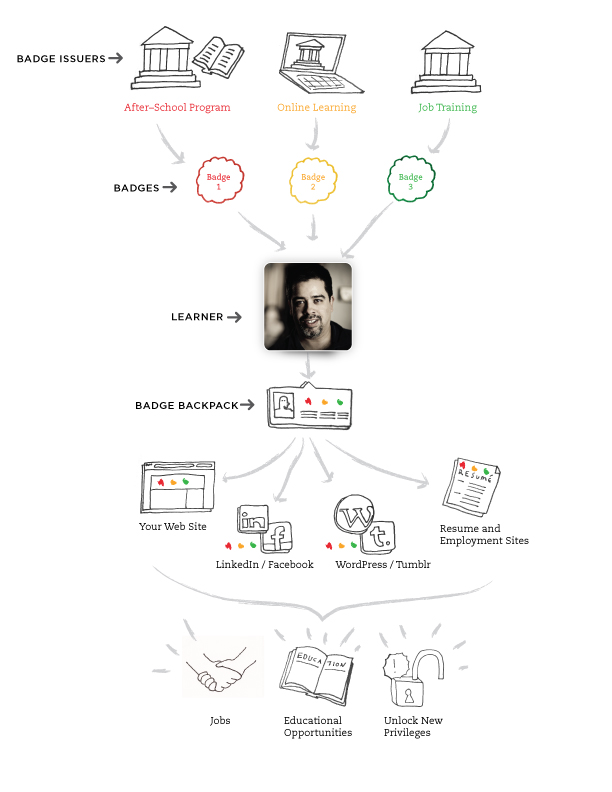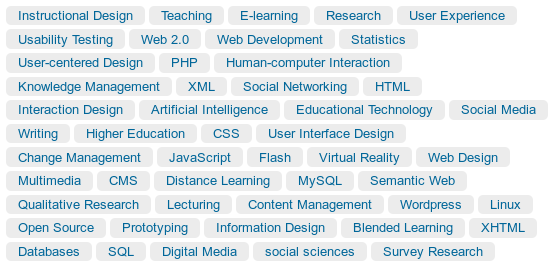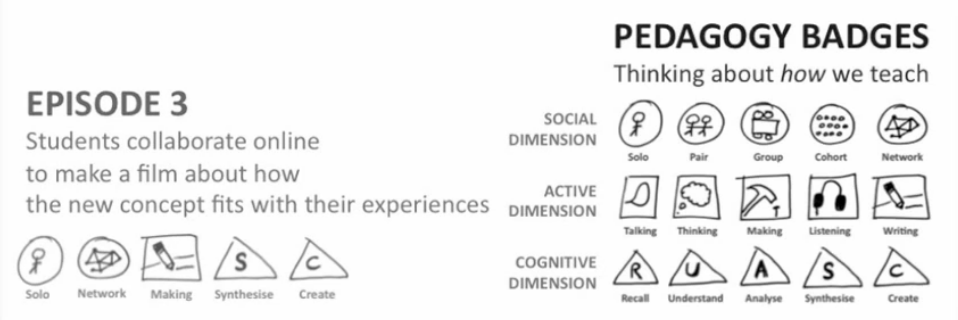Educational badges: Difference between revisions
m (using an external editor) |
m (using an external editor) |
||
| Line 72: | Line 72: | ||
=== Mozilla OpenBadges === | === Mozilla OpenBadges === | ||
The [http://www.openbadges.org/en-US/about.html Mozilla OpenBadges] project proposes the following architecture: {{quotation|Any Badge Issuer (for example, an after-school program, free online course, or vocational institute) can award Badges to learners like you. Learners/users can then collect and manage their badges in a Badge Backpack. This makes it easy to display your skills and achievements across a range of different Display Sites -- from your personal resume or web site, to social networking profiles, to employment sites.}}, retrieved 18: | The [http://www.openbadges.org/en-US/about.html Mozilla OpenBadges] project proposes the following architecture: {{quotation|Any Badge Issuer (for example, an after-school program, free online course, or vocational institute) can award Badges to learners like you. Learners/users can then collect and manage their badges in a Badge Backpack. This makes it easy to display your skills and achievements across a range of different Display Sites -- from your personal resume or web site, to social networking profiles, to employment sites.}}, retrieved 18:36, 14 March 2012 (CET). | ||
[[image:Badge-diagram-2.2.jpg|frame|none|Mozilla Open Badge Infrastructure. Source [http://www.openbadges.org/en-US/about.html openbadges.org] ]] | [[image:Badge-diagram-2.2.jpg|frame|none|Mozilla Open Badge Infrastructure. Source [http://www.openbadges.org/en-US/about.html openbadges.org] ]] | ||
The source code and the technical specifications are available from [https://github.com/mozilla/openbadges mozilla/openbadges] at GitHub. | The source code and the technical specifications are available from [https://github.com/mozilla/openbadges mozilla/openbadges] at GitHub. | ||
=== Tools for the visuals === | |||
Badges are just icons and/or buttons. However, depending on the context of use, there are some rules with respect to size. | |||
Typical badge sizes, according to [http://en.wikipedia.org/wiki/Web_badge Wikipedia] are: | |||
36x13 | |||
80x15 | |||
88x31 | |||
110x32 | |||
120x60 | |||
125x50 | |||
180x60 | |||
E.g. the badges used by a Mediawiki to display technology and licenses are 88x31 pixels (see the bottom of this page). The same [http://en.wikipedia.org/wiki/Web_badge Wikipedia] page also indexed some badge generation tools. See also its [http://en.wikipedia.org/wiki/Icon_%28computing%29 Icon] and [http://en.wikipedia.org/wiki/Widget_toolkit Widget toolkit] articles. | |||
== Links == | == Links == | ||
Revision as of 18:36, 14 March 2012
<pageby nominor="false" comments="false"/>
Introduction
Educational badges allow to "tag" all sorts of elements of a learning environment, e.g. learners, teachers, pedagogy. A batch can represent all sorts of information. For example, it could summarize achievements, opinions, interests, etc.
Badges can be physical, graphics within print text, elements of web pages, etc. Web badges can be machine readable, e.g. be designed for information harvesting and digital authentication. Others can include links (such as the MediaWiki page at the bottom of this page).
“'badge' is a symbol or indicator of an accomplishment, skill, quality or interest. From the Boy and Girl Scouts, to PADI diving instruction, to the more recently popular geo-location game, Foursquare, badges have been successfully used to set goals, motivate behaviors, represent achievements and communicate success in many contexts. A “digital badge” is an online record of achievements, tracking the recipient’s communities of interaction that issued the badge and the work completed to get it. Digital badges can support connected learning environments by motivating learning and signaling achievement both within particular communities as well as across communities and institutions.” (Open Badges for Lifelong Learning, retrieved 15:10, 14 March 2012 (CET)).
See also:
- gamification (gamification usually does include batches)
- 'Badges' Earned Online Pose Challenge to Traditional College Diplomas
- Learning analytics
- Learner assessment
Badges for authenticated assessment, achievements and skills
“To date the open education movement has focused almost exclusively on the production and sharing of content. Significant opportunities exist to reform or reinvent other, non-content portions of the education ecosystem with the support of open content. One of the areas ripest for innovation is alternative certification of informal learning. Hence, the recent excitement about badges. Badges have incredible potential for providing a viable alternative to the traditional system of credits most universities are tied to by accreditors. It seems to me that there is a critical need for someone to demonstrate that badges are a viable alternative to the traditional accreditation process.” Or Equivalent, by David Wiley, 2011, retrieved 15:10, 14 March 2012 (CET).
The Mozilla foundation white paper on Open Badges for Lifelong Learning (2011) identifies the following areas that badges could support:
- Capturing and translating the learning across contexts:
- Capturing of the Learning Path: Badges could capture and explicitly represent a more specified set of skills and qualities as they occur along the learning path, and could also track a broader, and perhaps more granular, set of skills.
- Achievement Signaling – Badges can represent skills or achievements and thus signal peers or outside stakeholders, such as potential employers or institutions
- Encouraging and motivating participation and learning outcomes:
- Motivation – Badges can provide intrinsic feedback or serve as milestones or rewards throughout a course or learning experience to encourage continued engagement and retention. Badges could make learners aware of skills or topics and encourage them to go down new paths or to spend more time trying to develop those skills.
- Supporting Innovation and Flexibility – Badges can be used to capture a wide range of skills, including those that are often missed or ignored by formal channels, or newer skills like digital literacies that evolve with the ever-changing society.
- Formalizing and enhancing existing social aspects of informal and interest-driven learning:
- Identity/Reputation Building – Badges can serve as mechanisms to encourage and promote identity within the learning community, as well as reputation among peers.
- Community Building/Kinship – Badges can signal community or sub-community membership and can help people find peers with similar interests or mentors to help teach them skills they lack.
(Excerpts from the 1/23/12 version of Open Badges for Lifelong Learning, retrieved 15:10, 14 March 2012 (CET))
The Mozilla foundation proposal is aligned with the connected learning initiative.
Badges for describing one's skills, possessions, beliefs, etc.
Badges can be used for various kinds of inventories.
For example, on the Thingiverse social sharing web site (digital designs for real, physical objects), users can in their profile define what kind of tools they own and therefore also implicitly define what they can build.

Social networking services like Facebook do provide badges that you can use on other websites, e.g. the "I like" button. Linkedin allows users in their profile to define a list of skills and expertises. Below is a rather randomly created list for the main author of this entry:
These examples show inventories that some may not qualify as lists of batches since they were created and authorized by the user. However, they do offer the same kind of functionality, i.e. visually tag a person with links that point directly or indirectly to skills.
McCrea's Pedagogy badges
Peps Mccrea (University of Brighton) and Jeremy Burton, in the 2012 JISC JISC elevator contest, proposed pedagogy badges. Their purpose are:
- Become more aware of their current e-learning and blended practice
- Become more aware of their desired practice, and how this differs from the above
- Become more aware of the pedagogical affordances of technology for teaching and learning
- Have better discussions about how we teach
- Change the way we teach
(retrieved March 14, 2012)
The initial proposal (to be refined) was made through a video of which we should a screen capture below. To the right is the initial sketch of a palette allowing to describe a pedagogy and to the left, an example activity tagged with some of these badges.
Comment
I like the idea of creating a simple palette of icons for describing pedagogical scenarios, i.e. some compromise between over-simplistic big categories and complex learning taxonomies à la DialogPlus. Of course, this idea must be tested first (1) with respect to its expressiveness, (2) whether normal teachers can use it and (3) and whether others could read the icons. After usability is ok, it's in the open whether it could be adopted or not. - Daniel K. Schneider 15:10, 14 March 2012 (CET)
Notation systems and software
Mozilla OpenBadges
The Mozilla OpenBadges project proposes the following architecture: “Any Badge Issuer (for example, an after-school program, free online course, or vocational institute) can award Badges to learners like you. Learners/users can then collect and manage their badges in a Badge Backpack. This makes it easy to display your skills and achievements across a range of different Display Sites -- from your personal resume or web site, to social networking profiles, to employment sites.”, retrieved 18:36, 14 March 2012 (CET).

The source code and the technical specifications are available from mozilla/openbadges at GitHub.
Tools for the visuals
Badges are just icons and/or buttons. However, depending on the context of use, there are some rules with respect to size.
Typical badge sizes, according to Wikipedia are:
36x13 80x15 88x31 110x32 120x60 125x50 180x60
E.g. the badges used by a Mediawiki to display technology and licenses are 88x31 pixels (see the bottom of this page). The same Wikipedia page also indexed some badge generation tools. See also its Icon and Widget toolkit articles.
Links
General
- Pedagogy Badges: disrupting how we teach March 5, 2012 by peps mccrea
As achievement indicator
- Or Equivalent (2011) by David Wiley.
- Response to David Wiley on an education “badge” system by Larry Sanger, September 20, 2011.
- Open Badges for Lifelong Learning (Mozilla white paper) by The Mozilla Foundation and Peer 2 Peer University, in collaboration with The MacArthur Foundation
For qualifying artifacts
- Pedagogy badges by Peps Mccrea (2012)
Examples in education
- Badges For Lifelong Learning Competition (A 2011/2012 competition with 30 entrants)
- Badges For Lifelong Learning Competition Stage One Learning Content Winners And Collaborators (As of March 2012, probably the best page to start browsing).
- See also: Badges For Lifelong Learning Competition Winners Announced. PDF (March 1, 2012)
Other examples
- Stackoverflow (E.g. search for badges

